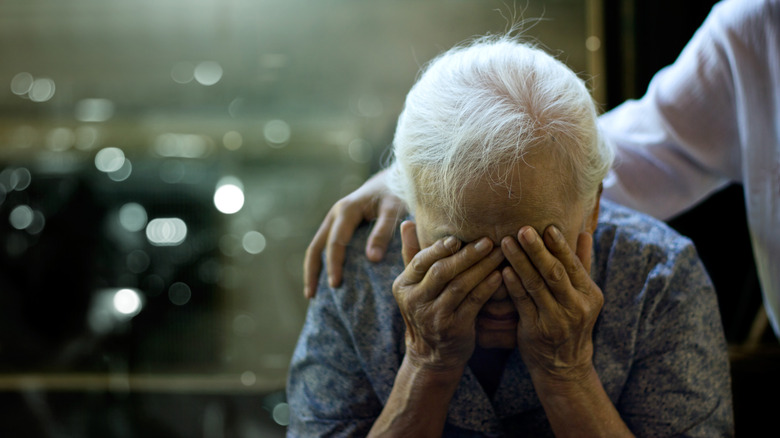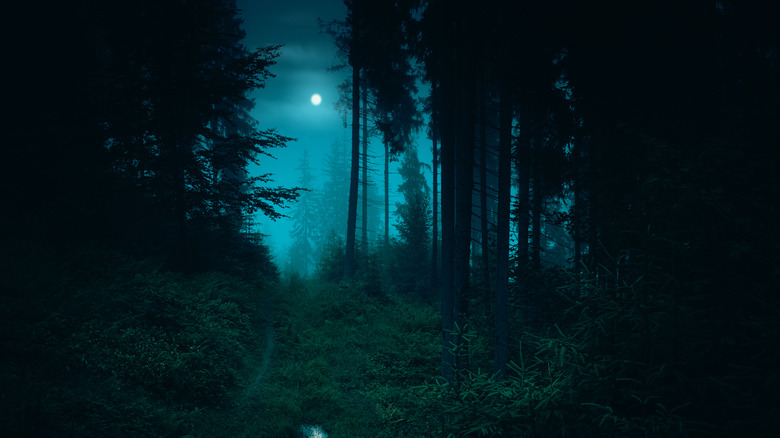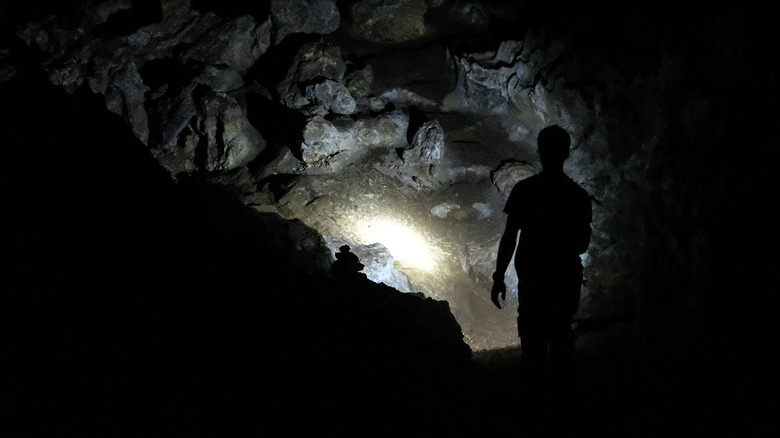The Mystery Of The Town That Fell Asleep
Imagine falling asleep for long periods of time with no clear cause and no easy solution. Some sort of fairytale-like condition that couldn't possibly exist — but it does.
There are many reasons people experience hypersomnia (sleeping too much), but the condition can usually be traced to underlying illnesses such as depression, epilepsy, Parkinson's disease, and even narcolepsy, according to WebMD.
Then there's also the very rare Kleine-Levin syndrome (KLS), also known as the "sleeping beauty syndrome," which is a disorder that causes people to sleep for up to 20 hours per day. Sometimes people live perfectly normal lives until an episode starts and for days or weeks, the person will basically sleep most of the day, just getting up to eat or go to the bathroom before returning to bed, as reported by Healthline.
KLS has no known cause so it can't really be prevented. Some conditions — like an injury to the area of the brain that controls sleep and appetite — can put you at risk for developing KLS, but the disorder is so rare, it's impossible to know when it might strike.
But none of this explains why or how so many residents of a small village seemed to fall asleep for days at a time. Or why for several years, between 2013 and 2015, scientists couldn't explain what was happening or how to help the suffering population.
How one town experienced mass episodes of deep sleeping
The tiny rural village of Kalachi in a remote area of Kazakhstan would have likely lived in obscurity forever if not for a mysterious illness that struck in 2012. With a population of just around 680, Kalachi — now sometimes referred to as "Sleepy Hollow" — is the first place in the world to be afflicted by a sleep syndrome event at a massive scale.
Kalachi's sleep problems started in the spring of 2013 when more than a fifth of the population started falling into a death-like slumber for days and sometimes a week at a time. Just as mysteriously as it appeared, the illness went away — but only temporarily. For the next two years, several "outbreaks" were reported in the town, sometimes affecting the same residents again and again and sometimes affecting new victims (via The Guardian).
The disease seemed to strike everybody from children to the elderly, causing a mix of symptoms that included extreme fatigue, partial memory loss, dizziness, blinding headaches, and loss of coordination. Some victims would simply fall into a sort of coma, waking up days later. Some blacked out while driving, others just went to sleep as usual and could not be woken up the next morning (per The Guardian).
When talking about the illness in his own child, a local father described it to the Inquisitr as "if you try to wake him, it seems he wants to open his eyes, but can't. He's sleeping and sleeping."
Doctors tried everything to find an answer
For years, scientists and doctors were baffled as to what could be causing the disease. In 2014, the Ministry of Health Care of Kazakhstan reported that "We have ruled out infectious and bacterial diseases. Gamma-background of the village is within the normal range. No increase in salts or heavy metals concentrations has been detected." They had also concluded that the disease, whatever it was, was at least not transmissible (per Tengrinews). By the end of that year, scientists had conducted thousands of tests involving the air, soil, water, and even building materials in the village with no conclusive results (via The Guardian).
Desperate to find an answer, scientists looked into everything, including counterfeit vodka and mass hysteria. Some locals claimed something supernatural was at play. But still, nothing could explain what was happening (per News18).
By early 2015, Kalachi was experiencing the ninth wave of the disease and authorities were encouraging residents to abandon the village through a "voluntary resettlement" program (per Inquisitr). When a documentary crew arrived in July 2015, they found half the town gone and the other half refusing to leave the place they had called home all their lives. They also found nine children at the local hospital who had all fallen asleep at the same time and were suffering from hallucinations, according to the HuffPost. By the end of 2015, however, scientists finally had a potential explanation.
And maybe that answer was right in front of them the entire time
Turns out that once upon a time, Kalachi and other towns around it had been a thriving mining area, but once the Soviet-era uranium mine closed in the early 1990s, most residents simply moved on. For those who stayed behind, however, life slowed down and nothing much happened — until the inexplicable sleeping sickness took hold over Kalachi. Scientists had looked at the mine early on in their investigation, but the two more likely culprits (radiation and radon gas) wouldn't have caused the symptoms people were experiencing.
When more scientists returned in 2015 for a second look, they noticed a significant amount of carbon monoxide escaping from the mine. According to scientists speaking to Wired, large amounts of carbon monoxide can affect the brain, causing unconsciousness and some of the other symptoms described by residents of Kalachi. Other experts aren't so sure, as some of those afflicted had been far from the mine, sometimes locked into their own cars or houses, at the time they fell asleep. It also doesn't explain how the mine suddenly started belching carbon monoxide after years of inactivity. It's a lot more likely that the deep slumber was the result of numerous things, including carbon monoxide but also elevated radon gas levels, and likely methane gas escaping from deep within the mine.
Or maybe not at all
In 2020, a team of scientists from Kazakhstan's Nazarbayev University offered a completely new theory. Turns out, most locals were getting their water from somebody who used an underground pump to extract it. The pump reached deep enough into the ground that it could've tapped into contaminated water. This would explain another big part of the mystery –why weren't local pets suffering from Sleepy Hollow syndrome along with their owners? According to Nazarbayev University, it makes sense that if people were paying for their water, they likely weren't sharing it with their pets — who would've instead sipped water from local rivers or waterways, which wouldn't be contaminated.
So what kind of chemicals could've been in the water? Researchers believe chemical waste dumped by the military during the Soviet era was a possibility, but it could have also been as simple as the uranium from the mine leaking into the water source. As the condition of the mine is too deteriorated to allow for human exploration, neither theory can be proven at the moment.




